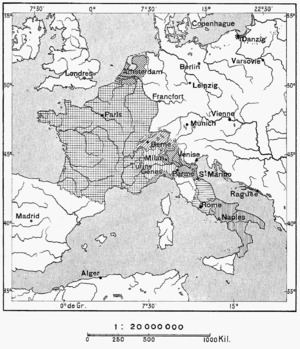 | ||
Sister republics building bridges women s leadership conference
A sister republic (French: république sœur) was a republic established by invading French armies or by local revolutionaries and assisted by the First French Republic during the French Revolutionary Wars.
Contents
- Sister republics building bridges women s leadership conference
- Background
- French sister republics of Italy
- Other French sister republics
- References
Background
Ideals favored by the National Convention and Robespierre during the period were popular sovereignty, rule of law and representative democracy. The republicans also borrowed ideas and values from Whiggism and Enlightenment philosophers.
The French Republic supported the spread of republican principles in Europe, but most of these sister republics became a means of controlling occupied lands through a mix of French and local power as client states. The republican governments promoted nationalism over the monarchy, primarily the Bourbons and Habsburgs.
In France, Revolutionary Republicanism was, in part, based on limiting corruption and greed. The revolutionaries saw these vices as endemic at the time, but were more readily preventable in a popular republic. A virtuous citizen was defined as one who ignored monetary compensation and made a commitment to resist and eradicate corruption. The Republic was sacred; therefore, it was necessary to serve the state in a truly representative way, ignoring self-interest and individual will.
Republicanism required supporters who were willing to give up their own interests for a common good. According to Bernard Bailyn, "The preservation of liberty rested on the ability of the people to maintain effective checks on wielders of power and hence in the last analysis rested on the vigilance and moral stamina of the people." Virtuous citizens needed to be strong defenders of liberty and challenge the corruption and greed in government. The duty of the virtuous citizen became a foundation for the American Revolution. The French Revolution looked to incorporate these founding ideals and to export them throughout Europe. However, most of these French client republics were short-lived. As the revolutionary republic became the Napoleonic Empire, they were often annexed to France proper or subsumed into more openly French puppet regimes.
